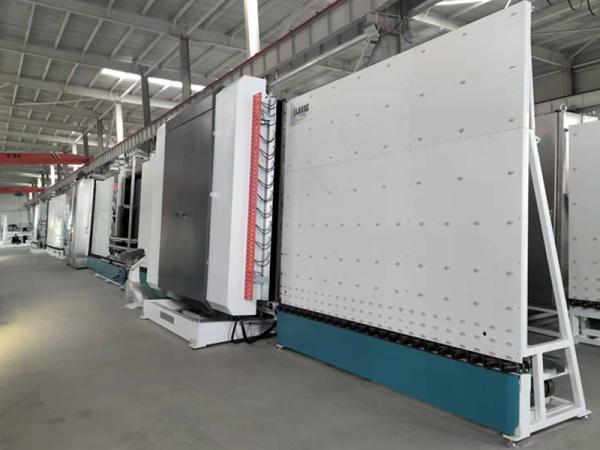Explore the secrets of insulating glass: an energy-efficient architectural gem

In 1865, Americans invented insulating glass with their innovative wisdom. Since its introduction, this new building material has reshaped the aesthetics and functions of buildings with its excellent performance. It is widely used in residential, commercial buildings, industrial plants and other scenes, becoming an ideal choice for modern buildings. It not only effectively insulates heat and sound, but also has the characteristics of beauty and practicality. At the same time, it reduces the weight of the building and injects new vitality into the construction industry.
The structure of insulating glass is exquisite and complex. It consists of two or three pieces of glass, which are closely connected to the aluminum alloy frame containing desiccant through high-strength and high-airtightness composite adhesives to create a high-efficiency sound insulation and heat insulation barrier. The common 5+9A+5 double-layer insulating glass on the market, where "5" represents 5mm thick glass, "9" represents the 9mm wide hollow part, and "A" is the abbreviation of "air", which intuitively shows its structural characteristics. In addition, various models such as 5+15A+5 and 5+22A+5 can meet the needs of different buildings.
1. Basic structure of insulating glass
(I) Glass sheet
As a basic component, the choice of glass sheet is rich and varied. Whether it is colorless transparent glass, or tempered, laminated, wired, embossed, colored, coated, or non-reflective glass, it can be matched with different thicknesses and sizes according to actual needs and design styles, laying the foundation for the performance of insulating glass.
(II) Spacer
The spacer made of aluminum or aluminum alloy has a cavity structure inside. It is not only used to fill molecular sieves, but also effectively isolates the glass sheet and plays a key supporting role. It not only carries molecular sieves, but also cleverly protects adhesives from direct sunlight, prolongs its service life, and ensures the stability of the insulating glass structure.
(III) Molecular sieve
Molecular sieve is like a humidity "balancer", which plays a role when the humidity between the glass is abnormal. When the humidity is too high, it quickly absorbs moisture; when the humidity is too low, it can release moisture, always maintaining the humidity balance between the glass, effectively preventing the glass from fogging, and ensuring its optical performance.
(IV) Inner sealant
Butyl rubber, as an inner sealant, has become the first line of defense against external gas invasion with its stable chemical properties, excellent air tightness and water tightness, ensuring the stability of the internal environment of the insulating glass.
(V) Outer sealant
The outer sealant, which belongs to the structural adhesive category, is not easy to flow due to its own weight and is mainly responsible for fixing. It cooperates with the inner sealant to form a double-channel seal, with strong bonding strength and good sealing, to fully guarantee the air tightness of the insulating glass.
(VI) Filling gas
Insulating glass can be filled with ordinary air or inert gas, and the initial gas content must be ≥85% (V/V). Insulating glass filled with argon can effectively slow down heat convection and reduce gas thermal conductivity, and is particularly outstanding in sound insulation, heat preservation, energy saving and other aspects.
II. Main performance characteristics of insulating glass
(I) Sound insulation and heat insulation
Thanks to the continuous action of the desiccant in the aluminum frame, the air inside the insulating glass is always kept dry, and the thermal insulation performance is excellent. In terms of sound insulation, it can block out 27-40 decibels of noise. For example, 80 decibels of noise from the outside world will only be 50 decibels after entering the room, creating a quiet space.
(ii) Good light transmittance
The high light transmittance of hollow glass allows the clean room light to easily transmit to the visiting corridor, while introducing outdoor natural light into the room, improving the indoor brightness and creating a comfortable production and living environment.
(iii) Improved wind pressure resistance
The wind pressure resistance of hollow glass can reach 15 times that of single-piece glass. It can still remain stable in severe weather such as wind and rain, providing reliable protection for the building.
(iv) High chemical stability
In the face of common acids, alkalis, salts and chemical reagent gases, hollow glass shows strong resistance, which makes it the preferred material for clean room construction in pharmaceutical companies.
(v) Good transparency
With excellent transparency, users can clearly observe the conditions and personnel operations in the clean room, which is convenient for supervision and management to ensure the smooth progress of the production process.
 en
en Spanish
Spanish Russian
Russian Arabic
Arabic Portuguese
Portuguese Italian
Italian French
French Turkish
Turkish Vietnamese
Vietnamese Thai
Thai






